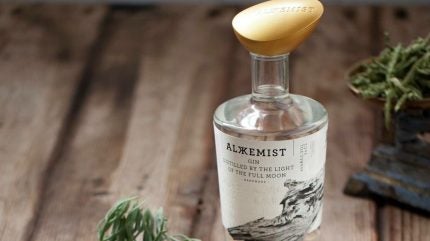
Spanish spirits producer Innovation Premium Brands is looking to use a recent internal investment to self-finance its growth from organic sales in the next three years.
James Le Grys, recently appointed managing director of the company’s Alkkemist gin and Unkkoded vodka brands, told Just Drinks he plans to get the business “to a point where in three years’ time… we’ll be able to sing for our own supper.
“I want us to get to three years where we can be organically grown from our own base of sales, basically.”
The three-year goal forms a part of the company’s wider five-year growth plan which it expects to bring into play in 2025.
Le Grys said: “I would like it to significantly scale up… in the next five years to be in a position where we have a brand home in Xàbia, we’ve scaled up to a point where we have our own distillery (at the moment it’s more of a warehouse)… and to be an internationally known brand.”
Founded in 2012, Innovation Premium Brands distils gin and vodka in the coastal town of Xàbia in Valencia. The production site has an annual production capacity of over two million bottles.
Last week, the company board announced a €500,000 ($535,535) investment which Le Grys plans to use to consolidate the gin and vodka brands under the single Alkkemist label and build the brand’s presence in its top markets of Spain, the US and Italy.
In the US, the business will look to expand further along the west coast, as it hopes to make the most of the halt to the Tequila boom. Speaking on the market, Le Grys said: “the Tequila/mezcal segment is very slowly decreasing, but [with] the amount they’re decreasing by, gin is sneaking in and vodka is growing.”
The cash injection will also go towards building relationships with its global distribution partners to help support expansion, boosting off-premise operations, as well as scaling up marketing through brand ambassadors.
Le Grys said he sees benefit in boosting headcount “in the extra markets where we have that capability of engaging communities, like the bartender community… in the US it’s so important to be able to engage with wholesalers and to make the brand alive. Otherwise, you’re just another line on a catalogue.”
Besides its top three markets, the gin and vodka brands are also sold to 25 other countries worldwide, including the UK, Caribbean, Croatia and Albania.
When asked whether its growth plans included the UK, Le Grys said he wanted to focus on Alkkemist’s “international landscape” due to the volatility of the UK market.
“If I’m going to be honest, there’s more challenges in the UK than there is actually outside of the UK for the gin category”, he said.
“That’s why I dare say my focus countries [are] the US, Italy and Spain… they’re the markets I think we can have the most penetration because they are more stable for gin and for vodka, whereas the UK is more inflammatory.”
Research published last October from Just Drinks’ parent GlobalData predicted 12.46% value growth for gin in the UK in 2024, reaching $3.8bn. However, David Harris, director for alcoholic beverages at the analytics company said he expected the market to move towards “flat to modest growth” in its annual update released later this year.
A general decline in alcohol consumption is to blame for the growth plateau, he said, with the reduction being offset slightly by consumers choosing to spend more on more expensive brands.
While this could work in the favour of smaller craft labels, gin in the UK is still likely to see “a tricky few years”, Harris said.
“I wouldn’t be surprised to see the big brands playing in the mainstream price brand really suffer, while smaller craft producers see volume grow while their margins are pressed by retailers trying to get the best deals for their customers.”



